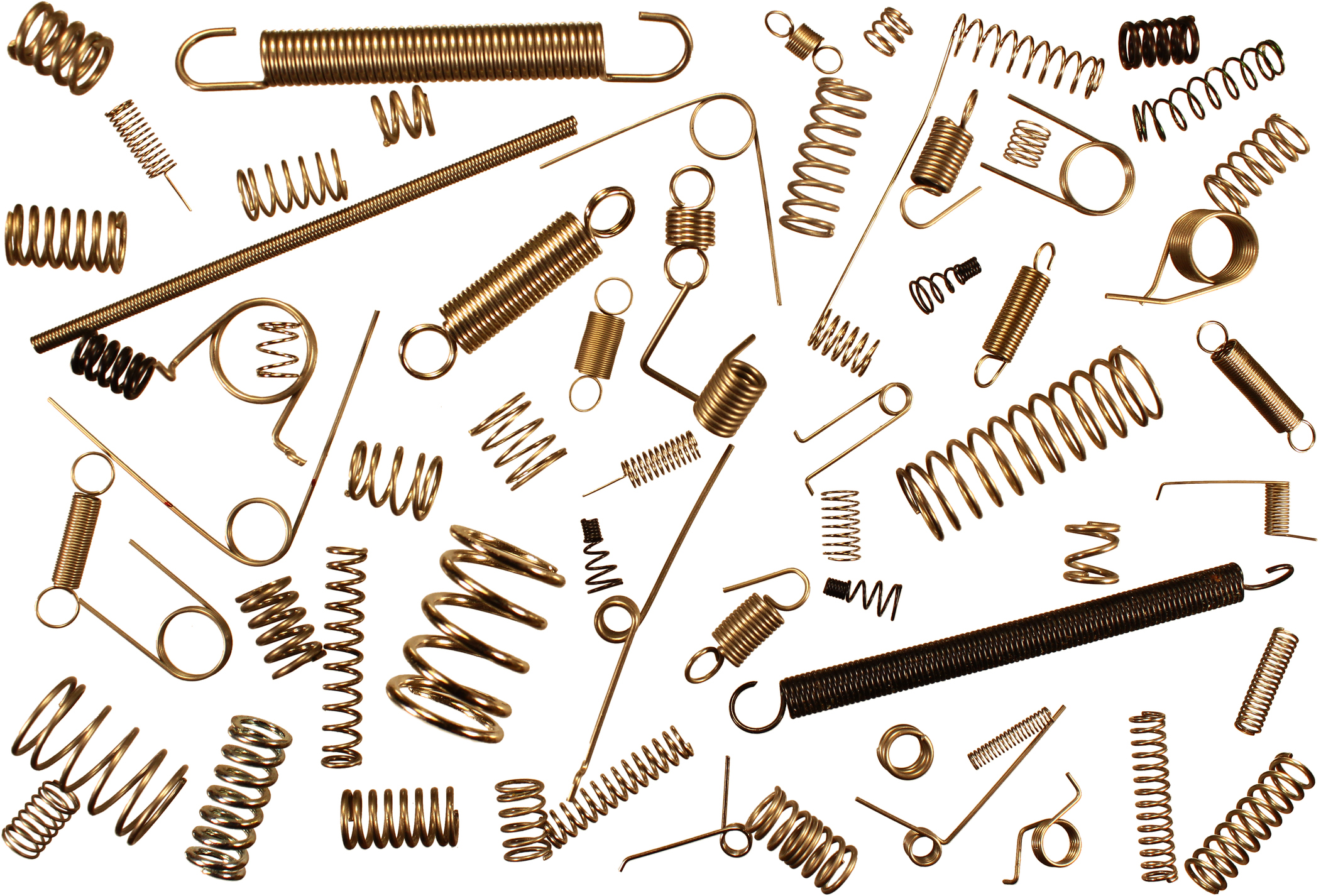Key qualities of springs
Contents |
[edit] Introduction
There are many different types of springs used throughout the design and engineering world, however, they all share common properties which make them perfect for projects. However, each spring can possess these properties in very different ways. Knowing how they do so is vital as these differences can vastly affect work.
What are the key qualities of springs that should be borne in mind when designing for a building project?
[edit] Torsion
Torsion is the twisting of an object as a result of torque being applied, in springs this allows them to store rotational energy. A torsion spring follows Hooke’s law, which states that force needed to extend a spring by some distance is proportional to this distance.
However, Hooke’s law must eventually fail once force exceeds a certain limit. Knowing what this limit is for particular needs becomes an integral part of any project.
This coiled spring was first used in door locks during the 15th century but soon became prominent in clock-making, as the first mechanical clock was also created that century with the help of springs.
Springs with high torsion ability can be used in clothes pins, cameras and a weight support for heavy moving objects like garage doors.
[edit] Compression
There are also spring with a distinctive helical shape capable of withstanding compressive forces. This is the most common spring type. A compression spring, when pushed by a load will always push back in order to try and reshape itself into its original form. Not only do they offer resistance to this force, but they also the most efficient way to store the energy received from this force.
When experiencing full load, the spring experiences stress and is in full torsion as a result. The stress is experienced more typically at the top of the spring, but operating stress is experienced throughout the spring depending on the spread of the load.
Installed at full stress in most cases, compression springs can take a significant amount of stress without experiencing damage.
Typically used in vehicle suspension, toys and spring mattresses or other areas that need to absorb impact.
[edit] Tension
Tightly wound coils designed to work with tension, these springs stretch to a certain length as the load is applied. The coils, when unloaded, are touching and only part when a load is applied. When the load pulls, the spring tries to return to its more compressed form and this causes the springing action until the force ceases and it returns to its original form.
One of the widest uses of all springs, found in industrial robots all the way to locks and trampolines.
[edit] Related articles on Designing Buildings Wiki
Featured articles and news
The UK's Modern Industrial Strategy: A 10 year plan
Previous consultation criticism, current key elements and general support with some persisting reservations.
Building Safety Regulator reforms
New roles, new staff and a new fast track service pave the way for a single construction regulator.
Architectural Technologist CPDs and Communications
CIAT CPD… and how you can do it!
Cooling centres and cool spaces
Managing extreme heat in cities by directing the public to places for heat stress relief and water sources.
Winter gardens: A brief history and warm variations
Extending the season with glass in different forms and terms.
Restoring Great Yarmouth's Winter Gardens
Transforming one of the least sustainable constructions imaginable.
Construction Skills Mission Board launch sector drive
Newly formed government and industry collaboration set strategy for recruiting an additional 100,000 construction workers a year.
New Architects Code comes into effect in September 2025
ARB Architects Code of Conduct and Practice available with ongoing consultation regarding guidance.
Welsh Skills Body (Medr) launches ambitious plan
The new skills body brings together funding and regulation of tertiary education and research for the devolved nation.
Paul Gandy FCIOB announced as next CIOB President
Former Tilbury Douglas CEO takes helm.
UK Infrastructure: A 10 Year Strategy. In brief with reactions
With the National Infrastructure and Service Transformation Authority (NISTA).
Ebenezer Howard: inventor of the garden city. Book review.
The Grenfell Tower fire, eight years on
A time to pause and reflect as Dubai tower block fire reported just before anniversary.
Airtightness Topic Guide BSRIA TG 27/2025
Explaining the basics of airtightness, what it is, why it's important, when it's required and how it's carried out.
Construction contract awards hit lowest point of 2025
Plummeting for second consecutive month, intensifying concerns for housing and infrastructure goals.
Understanding Mental Health in the Built Environment 2025
Examining the state of mental health in construction, shedding light on levels of stress, anxiety and depression.






















